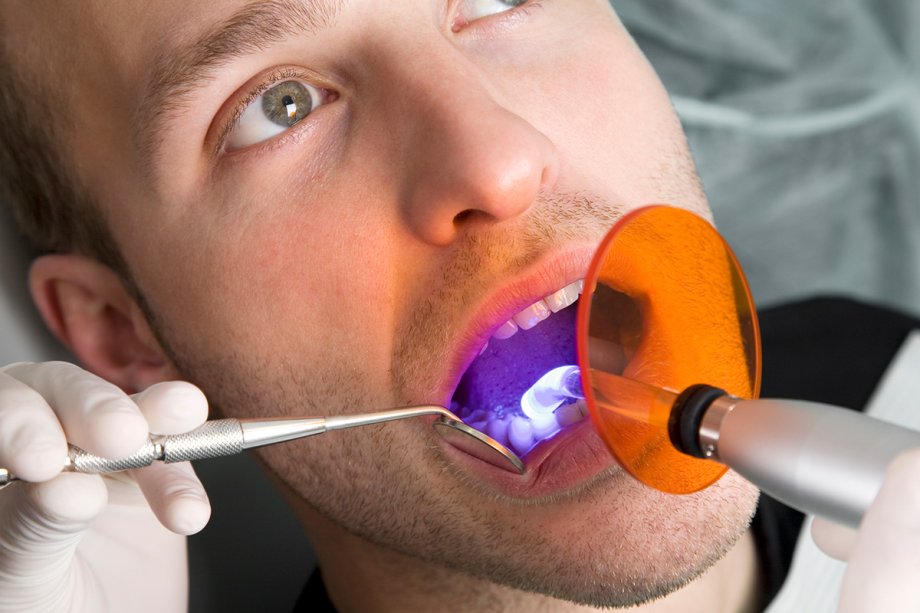Living with jaw pain can feel like a constant, unwelcome interruption. It disrupts simple joys like sharing a meal with friends, laughing without hesitation, or even just getting through a day without a nagging ache. We've seen firsthand how temporomandibular joint (TMJ) disorders can diminish a person's quality of life. The clicking, the popping, the locking, and the persistent pain can be frustrating and isolating. We want you to know that lasting relief might be more accessible than you realize.
For many of our patients on the Upper West Side, finding a solution that works has been a long journey. That's why we're so passionate about offering advanced, effective treatments. We believe in harnessing innovative technology to provide real solutions, and one of the most promising advancements in TMJ care is laser therapy. This cutting-edge approach uses the power of concentrated light to address pain and inflammation at its source, promoting natural healing without invasive procedures.
In this guide, we'll walk you through everything you need to know about TMJ disorders and how we use laser therapy to combat them. We will explore the root causes of jaw pain, explain the science behind photobiomodulation, and detail what you can expect when you come to our practice for this transformative treatment. We are committed to helping you understand your options so you can find a path back to comfort and function.
Understanding the Source of Jaw Discomfort
Before we can effectively treat TMJ pain, we must first understand what causes it. Temporomandibular joint disorders, often shortened to TMJD, are not a single condition but a group of issues that affect the jaw joint and the muscles controlling its movement. Think of the TMJ as a complex sliding hinge connecting your jawbone to your skull. When this system is out of balance, a wide range of symptoms can appear, including persistent jaw tenderness, audible clicking or grating sounds, and difficulty chewing. For some, the jaw can even feel like it's getting stuck or locking in place.
We've identified several common culprits behind these disruptive symptoms in the patients we treat. By pinpointing the underlying cause, we can develop a much more effective and personalized treatment plan.
Common Causes of TMJ Disorders
Bruxism (Teeth Grinding and Clenching): Many people grind or clench their teeth, often unconsciously, during sleep or moments of stress. This habit places immense pressure on the temporomandibular joint and the surrounding muscles. Over time, this sustained tension can lead to severe muscle fatigue, inflammation in the joint, and the development of TMJ dysfunction.
Jaw Misalignment: An improper bite or misaligned jaw can throw the entire system off balance. This misalignment may be genetic, the result of a past injury, or even stem from previous dental work that didn't fully account for your unique bite mechanics. When the jaw isn't aligned correctly, the joint and muscles must work harder to function, leading to strain, pain, and other TMJ symptoms.
Arthritis: Just like other joints in the body, the TMJ is susceptible to arthritis. Both osteoarthritis, which involves the breakdown of cartilage, and rheumatoid arthritis, an autoimmune condition causing inflammation, can affect the jaw joint. This degeneration leads directly to pain, stiffness, and reduced function, contributing significantly to TMJ disorders.
Recognizing these symptoms and their potential sources is the first step toward relief. When you visit us, we conduct a thorough evaluation to diagnose the specific factors contributing to your discomfort, allowing us to recommend the most appropriate and effective interventions to restore your jaw's health and function.
A Modern Approach: An Introduction to Laser Therapy
When our patients hear "laser," they might imagine something from a science fiction movie. However, in modern dentistry, laser therapy is a gentle, safe, and highly effective tool for healing. It involves using focused light energy to stimulate cellular activity deep within the body's tissues. For TMJ treatment, we apply this technology directly to the jaw joint and the overworked muscles around it to relieve pain and reduce inflammation. This non-invasive method provides a powerful alternative to traditional treatments like long-term medication use or surgery.
One of the most significant advantages of laser therapy is that it requires no incisions, no needles, and no anesthesia. The laser device emits precise wavelengths of light that painlessly penetrate the skin and reach the underlying tissues. This process stimulates the body's own healing mechanisms, promoting cellular regeneration and calming inflammation from within. We find that our patients tolerate this procedure exceptionally well, reporting little to no discomfort and appreciating the absence of any recovery downtime. By harnessing the power of light, we offer a gentle yet potent solution for managing TMJ symptoms, bringing hope and tangible relief to those struggling with chronic jaw pain.
The Science of Healing: How Laser Therapy Works
The magic behind laser therapy isn't magic at all; it's a scientific process called photobiomodulation. This process uses specific wavelengths of light to create a positive chain reaction within your cells. When we direct the laser at the TMJ and its surrounding muscles, we trigger a cascade of biological responses that accelerate healing and directly address the symptoms of TMJD.
The Mechanism of Action
- Cellular Energization: We begin by applying concentrated light energy from the laser to the affected area. Specialized components within your cells, known as chromophores, absorb this light.
- Fueling Repair: This absorption kicks off a series of biochemical reactions, most notably an increase in the production of adenosine triphosphate (ATP). ATP is essentially the fuel that powers every cell in your body.
- Accelerated Healing: With more ATP available, cellular metabolism kicks into high gear. This enhancement speeds up the natural processes of tissue repair and regeneration, helping your body heal itself more efficiently.
Reducing Painful Inflammation
Inflammation is a primary source of pain in TMJ disorders. Laser therapy directly combats this in two key ways. First, it helps regulate the body's inflammatory response by decreasing the production of pro-inflammatory agents and encouraging the release of anti-inflammatory factors. Second, the light energy stimulates lymphatic drainage, which helps your body clear away inflammatory byproducts more effectively. This process reduces the swelling and edema that contribute to pain and stiffness in the jaw.
Promoting Deep Tissue Healing
Laser therapy also actively rebuilds the damaged tissues in and around the TMJ. Boosting cellular metabolism encourages the synthesis of collagen and elastin, which are the fundamental building blocks for healthy connective tissue. Enhanced collagen production strengthens the structural integrity of the joint and surrounding ligaments, facilitating faster, more robust healing and helping restore normal, pain-free function. By leveraging these therapeutic benefits, we can effectively manage TMJD symptoms without drugs or surgery, providing our patients with a safe and efficient path toward lasting relief.
Your Laser Therapy Session: What to Expect
When you come to our practice for TMJ laser therapy, we want you to feel comfortable and informed every step of the way. We find that knowing what to expect can ease any apprehension and help you focus on the healing process. The entire experience is straightforward, gentle, and effective.
The Treatment Process
First, we will perform a comprehensive assessment of your TMJ condition to confirm the diagnosis and create a personalized treatment plan just for you.
During the session, you will relax in one of our comfortable treatment chairs. We will then use a handheld laser probe, directing it toward the targeted areas around your jaw joint and facial muscles. The laser emits gentle, low-level pulses of light. Most of our patients describe the sensation as a subtle, pleasant warmth on the skin; it is not painful.
A typical treatment session is relatively short, usually lasting between five and twenty minutes. The exact duration depends on the severity of your TMJ disorder and the size of the area we need to treat.
Potential Side Effects and Post-Treatment Care
Laser therapy is incredibly safe, and side effects are rare and minimal. Some patients might notice mild, temporary redness or a continued feeling of warmth in the treated area. These effects typically fade within a few hours of the session.
One of the best parts about laser therapy is the complete lack of downtime. You can return to your normal daily activities immediately after your appointment. To support the healing process, we recommend staying well-hydrated and maintaining your usual excellent oral hygiene routine.
For the best results, we usually recommend a series of treatments. Most patients achieve optimal relief after several sessions spaced out over a few weeks. We will work with you to determine the ideal schedule to help you achieve long-term comfort and function.
At Smiles on the Upper Westside, Dr. Massiah and our dedicated team combine decades of experience with the latest dental technology to provide comprehensive, patient-centered care. We invite you to contact our New York City office today to schedule your consultation and discover a better dental experience.

